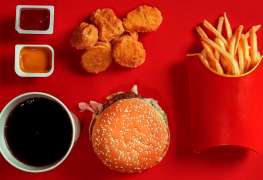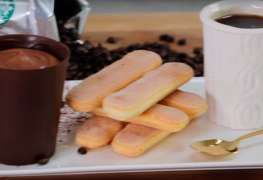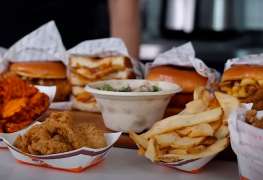 Location, location, location. You’ve probably heard it a million times.
Location, location, location. You’ve probably heard it a million times.That must mean it’s important, right? You bet. Location can make or break a restaurant, so it’s important to pick a good one.
According to Forbes, if you’re thinking about opening a coffee shop or bistro, location is everything.
Restaurant expert, Lorri Mealy, explains that one reason restaurants fail is a poor choice in location. She says a bad location is one of the biggest, if not THE biggest, reason restaurants fail.
Before we can talk about what makes a great restaurant location, let’s talk about what makes a bad restaurant location.
Several items make for a bad restaurant location and one you want to steer clear of. These include:
Poor visibility – your restaurant isn’t easily seen from the street.
No parking – it’s virtually impossible to find a parking place.
High crime rate – this can make diners uncomfortable.
Ask yourself, “Are other restaurants in the area doing well?” If the answer is no, and yesterday’s restaurants are boarded up, then you are definitely not in a good location.
So, what makes a great restaurant location? Let’s find out.
User-Friendly Parking
Unless your restaurant is located in a big city where people are accustomed to walking, it’s safe to say that most people are lazy.
How many times have you seen people drive around a parking lot for five minutes before they found that front-row parking spot they were looking for?
Ideally, your new restaurant should have its own parking lot. Take into consideration how many people you can seat at a time and make sure you have enough parking spaces to accommodate them. If you don’t, take a look around and see if there is a convenient overflow parking lot.
Accessibility
We bet you’ve noticed that major chains are often located right off the highway. There is a reason.
It makes it easy for in-town and out-of-town diners to access. Being located off a major roadway often means customers don’t have to fight traffic.
Visibility
When scouting locations, see if your restaurant is easily seen from the street. If the location isn’t directly accessible through Google Maps, it’s likely not a good choice.
Consider the downtown location, or the location in the busy night-time district. These are examples of great restaurant locations because they are visible and accessible.
Think about traffic patterns. High-traffic areas are usually good spots for restaurants.
Target Market and Population Base
Assuming you’ve spent time planning your target market, you want to talk a look around your proposed location and decide if there is enough of a population base to sustain your restaurant.
Take a look at how far away you are from your market. Try to stay no more than 20-30 minutes away from your target.
It’s a good rule of thumb to place your restaurant where your target market lives, works and/or plays. Look at some of these things regarding the population base when deciding your restaurant location:
Age of your target. Does your location fit the age of your target demographic?
Are there enough people in the vicinity?
Can they afford your restaurant?
Crime rate. This might affect some concepts more than others. If you’re marketing a family-style restaurant, it’s usually best to stay out of high crime areas. If you’re a restaurant with a bar, you might have more success in a downtown or inner-city area.
Look at the Competition
Check out saturation levels. If there are already four pizzerias on the block where you want to place your restaurant, take some time deciding if the area can handle another pizza shop.
Do some sleuthing. It isn’t always a bad thing to be grouped with similar restaurant concepts, but you’ll need to analyze the market before deciding.
Case Study
Let’s look at the restaurant franchise Huddle House. They have spent time working out a formula for a great location for their franchisees.
Here is an overview of their recipe for success and how they determine good locations for future restaurants:
Minimum population is preferably about 12,000 within a 5-mile radius in rural locations.
Overall trade area is growing or stable.
Interstate locations, if possible, have a minimum traffic count of 24,000, with a small-town population of 7,000 -10,000 within a 3-mile area.
Lot size for freestanding restaurants is usually a minimum of 25,000 square feet, unless parking can be shared with adjoining lot.
Minimum of 36 parking stalls is desired.
Good accessibility into location is a must.
Preferred maximum traffic speed of 45 mph at site.
Average travel time to work should be 30 minutes or less.
Retail support ideally is within one mile of site.
Ideal household income is between $32,000 and $75,000 per year.
Unemployment rate is optimally less than 10%.
Does this mean their formula is perfect for your restaurant? Not necessarily. If your restaurant is similar to their model, it’s a good place to start.
If you are, for example, a high-end restaurant, you can view their “formula,” and re-purpose it to fit your unique concept. Perhaps you’d want to place your restaurant in a professional area with income in a higher range.
If your concept is a bakery or coffee shop catering to college students, you might also want to adjust some of their parameters. You might not care about parking, but you’d want to be within walking distance of campus, dorms and apartments.
Can You Overcome a Bad Location?
Maybe.
To try and overcome a bad location, you’ll need some very creative marketing to succeed. Underdog Coffee in Oregon is one such restaurant who overcame a terrible location.
How’d they do it? They made a play on the poor location with their name – Underdog Coffee, used better coffee beans than the previous shop, and created eye-catching, backlit signs.
Other ways you might overcome a bad location are by being ultra unique and one-of-a-kind.
To Conclude
Before opening your restaurant, you need to assess your location. (tweet this) Look around you. See who is in the neighborhood. Decide who your target customer is.
If you want to draw the young business crowd, situating your restaurant in a shopping mall probably isn’t the best idea. Your best bet is in the downtown area or a trendy spot with a good night life.
Restaurants in shopping malls tend to attract families, teenagers and the elderly.
Looking to draw an adult crowd with business people? Look for a location near office buildings.
It’s important to your success to first define your target customer. Who are you marketing to? Who might be interested in your food? What is your price point? Will they be able to afford it?
Once you’ve answered these questions, you can scout out the perfect location for your restaurant. Once your great location is secured, you are well on your way to restaurant success.
Source: restaurantengine.com








Leave a comment